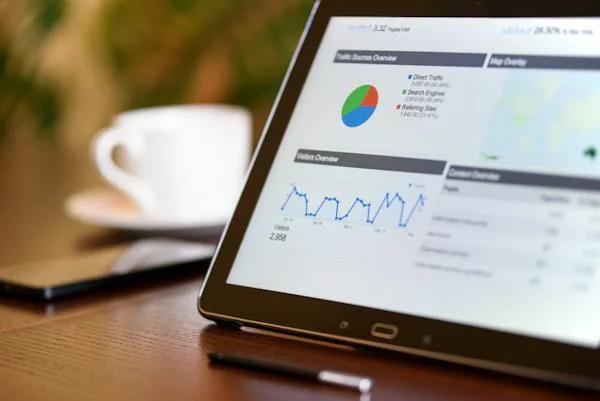This Article has been revised, edited and added to, by Poulomi Chakraborty.
- Understanding A/B Testing: The Basics
- Implementing A/B Testing in Your Email Marketing Strategy
- Real-World Applications of A/B Testing in Email Marketing
- Tools and Resources for A/B Testing
- Advanced A/B Testing Techniques
- Overcoming Common Challenges in A/B Testing
- Practical Examples of A/B Testing
- Improving Open Rates with Subject Line Testing
- Boosting Click-Through Rates with Different CTAs
- Enhancing Conversion Rates with Landing Page Testing
- Seasonal Campaign Optimization
- Lessons Learned from Failed Tests
- The Impact of A/B Testing on Long-Term Strategy
- Integrating A/B Testing with Overall Marketing Efforts
- Conclusion
In the fast-paced world of digital marketing, making informed decisions is key to success. One of the most powerful tools available to marketers for optimizing their campaigns is A/B testing. This method, also known as split testing, allows you to compare two versions of an email to see which one performs better. By making data-driven decisions, you can significantly enhance your email marketing efforts, driving higher engagement and conversions. In this article, we’ll delve into the intricacies of A/B testing, exploring how it can transform your email marketing strategy and help you achieve your business goals.
Understanding A/B Testing: The Basics

A/B testing is a method used to compare two versions of an email (or any other marketing material) to determine which one performs better. The process involves splitting your audience into two groups and sending each group a different version of the email. By analyzing the results, you can identify which version resonates more with your audience, leading to better performance metrics such as open rates, click-through rates, and conversions.
The Importance of A/B Testing
In email marketing, making decisions based on assumptions can lead to missed opportunities and suboptimal results. A/B testing removes the guesswork by providing concrete data on what works and what doesn’t.
This data-driven approach allows you to continuously optimize your campaigns, ensuring that each email you send is more effective than the last.
To understand the importance of A/B testing, consider this comparison: Imagine you’re cooking a new recipe for the first time. You might follow the instructions closely, but without tasting along the way, you won’t know if it’s turning out well until it’s too late.
A/B testing is like tasting the dish as you cook—it allows you to make adjustments in real-time, ensuring the final result is as delicious as possible.
How A/B Testing Works
The process of A/B testing is straightforward but requires careful planning and execution. First, you need to decide what element of your email you want to test. This could be the subject line, the email copy, the call-to-action (CTA), the design, or even the timing of the send. Once you’ve identified the element to test, create two versions of your email—Version A and Version B.
Next, divide your email list into two equal groups. Send Version A to one group and Version B to the other. After the emails have been sent, analyze the performance metrics to determine which version performed better. Based on these results, you can implement the winning version in future campaigns or continue testing other elements to further optimize your emails.
Key Elements to Test
There are several elements in an email that can be tested to improve performance. Some of the most common include:
- Subject Line: The subject line is often the first thing a recipient sees, making it a crucial element to test. Try different wording, lengths, and tones to see what resonates best with your audience.
- Email Copy: The body of your email is where you convey your message. Test different lengths, styles, and content types to find the most effective approach.
- Call-to-Action (CTA): The CTA is what you want your recipients to do next. Test different placements, wording, and designs to maximize clicks and conversions.
- Images and Design: The visual elements of your email can have a significant impact on engagement. Test different images, layouts, and color schemes to see what works best.
- Send Time: The time you send your email can affect open and engagement rates. Test different days of the week and times of day to find the optimal send time for your audience.
Implementing A/B Testing in Your Email Marketing Strategy
Setting Clear Objectives
Before you start A/B testing, it’s essential to set clear objectives. What do you want to achieve with your test? Are you looking to increase open rates, boost click-through rates, or drive more conversions? Having a clear goal in mind will help you determine what elements to test and how to measure success.
Creating Hypotheses
A hypothesis is a statement that you can test with your A/B experiment. For example, you might hypothesize that a shorter subject line will result in higher open rates, or that a red CTA button will drive more clicks than a blue one. Creating hypotheses gives you a clear direction for your tests and helps you stay focused on your objectives.
Designing Your Test
When designing your test, make sure to only change one element at a time. This ensures that any differences in performance can be attributed to the element you’re testing. For example, if you’re testing subject lines, keep the email copy and design the same for both versions. This will give you a clear understanding of which subject line performs better.
Choosing the Right Sample Size
The size of your sample group can significantly impact the reliability of your results. If your sample size is too small, your results may not be statistically significant. If it’s too large, you may be unnecessarily delaying your campaign. Use an A/B testing calculator to determine the appropriate sample size for your test, ensuring you get accurate and reliable results.
Analyzing Results
After running your test, analyze the results to determine which version performed better. Look at key metrics such as open rates, click-through rates, and conversion rates. Use these insights to make data-driven decisions and optimize your future campaigns. Remember, the goal of A/B testing is continuous improvement, so keep testing and refining your approach to achieve the best possible results.
Real-World Applications of A/B Testing in Email Marketing

Enhancing Subject Lines for Higher Open Rates
Subject lines are critical in determining whether your email gets opened. A/B testing can help you refine your subject lines to maximize open rates. For instance, if you’re launching a new product, you might test two subject lines: one that highlights the product’s unique feature and another that creates a sense of urgency. By analyzing the open rates of both versions, you can identify which approach resonates more with your audience.
Optimizing Email Content for Engagement
The content within your email plays a significant role in driving engagement. A/B testing different email copy styles can provide insights into what keeps your audience interested.
For example, test an email that uses a storytelling approach against one that focuses on straightforward product details. By comparing click-through rates and time spent reading each email, you can determine which style is more effective.
Fine-Tuning CTAs to Boost Conversions
The call-to-action (CTA) is where you guide your readers to take the next step, whether it’s making a purchase, signing up for a webinar, or downloading a resource. A/B testing CTAs can involve changing the text, color, placement, or size of the button.
For example, you might test a “Buy Now” button against a “Shop Today” button or a red button against a green one. Analyzing which version gets more clicks can help you optimize your CTAs for better conversion rates.
Improving Design and Layout
The design and layout of your emails can significantly impact how recipients interact with your content. A/B testing different layouts can help you find the most effective design.
For instance, test a single-column layout against a multi-column layout or a text-heavy design against one that uses more images. Monitor metrics such as click-through rates and heat map data to see how recipients are engaging with your email.
Timing Your Sends for Maximum Impact
The time and day you send your emails can influence open and engagement rates. A/B testing different send times can help you identify when your audience is most likely to open and read your emails.
For example, test sending emails on weekday mornings versus evenings or weekends. Use the results to schedule your emails at times when they are most likely to be seen and acted upon.
Personalization and Segmentation
Personalization and segmentation are key strategies in email marketing that can be optimized through A/B testing. Test personalized subject lines against generic ones or emails segmented by customer behavior versus a one-size-fits-all approach. This can provide insights into how personalization and segmentation impact engagement and conversions.
Testing Across Different Devices
With a significant portion of emails being opened on mobile devices, it’s crucial to ensure your emails are optimized for all screens. A/B testing can help you determine how different designs and layouts perform on desktop versus mobile. Test emails with responsive designs against those with simpler layouts to see which performs better on various devices.
A/B Testing in Action
To illustrate the power of A/B testing, let’s look at a hypothetical case study. Imagine an e-commerce company that wants to increase its email marketing ROI. They decide to A/B test different elements of their email campaigns over a three-month period.
In the first month, they test subject lines, comparing a straightforward product name with a more creative, curiosity-driven subject line. The creative subject line yields a 20% higher open rate.
In the second month, they focus on the email content, testing a long-form, detailed email against a concise, bullet-pointed version. The shorter email generates a 15% higher click-through rate.
Finally, in the third month, they test CTAs, comparing a red “Buy Now” button with a green “Buy Now” button. The red button results in a 10% higher conversion rate.
By the end of the three months, the company has significantly improved its email marketing performance through data-driven decisions informed by A/B testing.
Tools and Resources for A/B Testing

Choosing the Right Email Marketing Platform
Selecting the right email marketing platform is crucial for successful A/B testing. Look for a platform that offers robust A/B testing capabilities, detailed analytics, and easy-to-use interfaces. Popular options include Mailchimp, HubSpot, and Campaign Monitor. These platforms provide the tools you need to set up, run, and analyze your tests efficiently.
Utilizing Analytics Tools
In addition to your email marketing platform, consider using analytics tools to gain deeper insights into your A/B tests. Google Analytics, for example, can help you track how your email traffic interacts with your website, providing valuable data on conversion rates and user behavior.
Learning from Industry Experts
Staying informed about the latest trends and best practices in A/B testing can enhance your email marketing efforts. Follow industry blogs, attend webinars, and join marketing forums to learn from experts and peers. Resources like MarketingProfs, Content Marketing Institute, and Neil Patel’s blog offer valuable insights and tips.
Continuous Education and Improvement
A/B testing is an ongoing process of learning and optimization. As you run more tests and gather more data, you’ll gain a deeper understanding of what works best for your audience. Stay committed to continuous improvement, and don’t be afraid to experiment with new ideas and approaches.

Related: Check out our free SEO suite

Advanced A/B Testing Techniques
Multivariate Testing
While A/B testing focuses on comparing two versions of a single element, multivariate testing allows you to test multiple elements simultaneously. This technique can provide deeper insights into how different components of your email interact with each other and contribute to overall performance.
For example, in a multivariate test, you might test different combinations of subject lines, images, and CTAs. By analyzing the results, you can identify the most effective combination of elements. However, keep in mind that multivariate testing requires a larger sample size to achieve statistically significant results, as you are testing more variables at once.
Sequential Testing
Sequential testing involves running a series of A/B tests in a structured manner, where each test builds on the insights gained from the previous one. This approach allows you to make incremental improvements over time, rather than trying to optimize multiple elements simultaneously.
Start by testing the most critical elements, such as subject lines or CTAs. Once you identify a winner, move on to the next element, such as email copy or design. Sequential testing helps ensure that each change contributes to the overall improvement of your email performance.
Bayesian A/B Testing
Bayesian A/B testing is an advanced statistical approach that provides more flexibility and accuracy compared to traditional methods. It allows you to update your test results as new data comes in, rather than waiting for the test to complete.
This method uses probability to estimate the likelihood that one version is better than the other. It can be particularly useful for making decisions in real-time and adapting your strategy based on the latest data. Bayesian A/B testing can be more complex to implement but offers a more nuanced understanding of your results.
Testing for Different Segments
Not all segments of your audience will respond the same way to your emails. By running A/B tests for different segments, you can tailor your campaigns more precisely and increase their effectiveness.
For example, test different versions of your emails for new subscribers versus long-term customers. You might find that new subscribers respond better to educational content, while loyal customers prefer exclusive offers. Segment-specific testing allows you to deliver more relevant and personalized experiences to each group.
Cross-Channel A/B Testing
Email marketing doesn’t exist in isolation. Your audience interacts with your brand across multiple channels, including social media, your website, and paid ads. Cross-channel A/B testing involves testing different elements of your email campaigns in conjunction with other marketing channels.
For instance, you can test how a specific email subject line performs when paired with a particular social media post or website banner. This approach helps you understand how different channels influence each other and optimize your overall marketing strategy for better results.
Cross-Channel A/B Testing
Let’s look at a hypothetical case study of an online clothing retailer that wants to increase sales during the holiday season. They decide to implement cross-channel A/B testing to optimize their marketing efforts.
First, they test two different email subject lines: one emphasizing a holiday sale and the other highlighting a limited-time offer. They also run A/B tests on their social media ads, comparing images of winter clothing against festive holiday scenes.
Next, they analyze how these elements interact. They find that the holiday sale subject line performs best when paired with social media ads featuring winter clothing. This combination leads to higher click-through rates and increased conversions on their website.
By leveraging cross-channel A/B testing, the retailer can create a cohesive and effective holiday marketing campaign that drives significant sales.
Incorporating AI and Machine Learning
Artificial intelligence (AI) and machine learning are transforming the way marketers approach A/B testing. These technologies can analyze vast amounts of data quickly, identify patterns, and make predictions about what will work best.
AI-powered tools can automate the A/B testing process, from setting up tests to analyzing results. They can also provide recommendations for optimization based on real-time data. Incorporating AI and machine learning into your A/B testing strategy can enhance your decision-making process and lead to more effective email campaigns.
Overcoming Common Challenges in A/B Testing

Ensuring Statistical Significance
One of the most common challenges in A/B testing is achieving statistical significance. Without a large enough sample size, your test results may not accurately reflect the performance of each version. To overcome this, use an A/B testing calculator to determine the appropriate sample size before starting your test.
Avoiding Confirmation Bias
Confirmation bias occurs when you interpret results in a way that confirms your preexisting beliefs or hypotheses. To minimize this bias, approach each test with an open mind and be willing to accept unexpected outcomes. Rely on data, rather than assumptions, to guide your decisions.
Dealing with External Factors
External factors, such as holidays, market trends, or even weather, can influence your A/B test results. To account for these variables, run your tests over a sufficient period to capture a representative sample of behavior. If possible, conduct tests during different times or seasons to ensure consistent results.
Managing Multiple Tests
Running multiple A/B tests simultaneously can complicate your analysis and lead to conflicting results. To avoid this, prioritize your tests based on their potential impact and run them sequentially when possible. Use a structured approach to track and analyze each test, ensuring you can attribute changes in performance to specific variables.
Learning from Failures
Not every A/B test will yield positive results. Some tests may show no significant difference, or the new version may perform worse than the control. Treat these outcomes as learning opportunities. Analyze the data to understand why the test didn’t work as expected and use these insights to inform future tests.
Practical Examples of A/B Testing

Improving Open Rates with Subject Line Testing
One of the simplest yet most impactful elements to test in your email campaigns is the subject line. The subject line is the first thing recipients see, and it plays a crucial role in whether or not they open your email. Let’s consider a practical example of how subject line testing can improve open rates.
Imagine you run an online bookstore and are preparing to send a promotional email. You create two subject lines to test:
- Version A: “Get 20% Off Your Next Purchase!”
- Version B: “Unlock Your Exclusive 20% Discount Today!”
By sending Version A to half of your audience and Version B to the other half, you can measure which subject line generates higher open rates. After the test, you find that Version B outperforms Version A by 15%. This insight allows you to refine your subject lines for future campaigns, focusing on creating a sense of exclusivity and urgency.
Boosting Click-Through Rates with Different CTAs
The call-to-action (CTA) is another critical component of your email that can benefit from A/B testing. The CTA directs recipients towards the next step, whether it’s making a purchase, signing up for a webinar, or downloading a resource.
Consider an example of a fitness apparel brand promoting a new line of workout gear. They decide to test two different CTAs:
- Version A: “Shop Now”
- Version B: “Discover Your Perfect Workout Outfit”
By analyzing the click-through rates of both versions, they find that Version B has a 20% higher click-through rate. This result suggests that a more descriptive and engaging CTA resonates better with their audience, leading to higher engagement.
Enhancing Conversion Rates with Landing Page Testing
While the content of your email is crucial, the landing page where recipients are directed is equally important. A/B testing different landing page designs can significantly impact your conversion rates.
Let’s say you are a software company promoting a new tool. You create two landing page versions:
- Version A features a detailed product description and several customer testimonials.
- Version B highlights the key benefits of the tool with bullet points and includes a short demo video.
After running the test, you discover that Version B has a 25% higher conversion rate. This indicates that concise, benefit-focused content and visual elements like videos are more effective in driving conversions.
Seasonal Campaign Optimization
To illustrate the power of A/B testing in a real-world scenario, consider a hypothetical case study of an e-commerce fashion retailer preparing for a summer sale. They want to optimize their email campaign to maximize sales during this crucial period.
First, they test two subject lines:
- Version A: “Summer Sale: Up to 50% Off!”
- Version B: “Your Summer Wardrobe Awaits: Up to 50% Off!”
Version B achieves a 12% higher open rate, so they proceed with this subject line for the main campaign.
Next, they test the email content. Version A includes a single, large image showcasing various summer outfits with a “Shop Now” CTA. Version B features a collage of smaller images, each linking to different product categories like swimwear, dresses, and accessories, with the CTA “Explore Summer Styles.”
The results show that Version B has a 30% higher click-through rate, indicating that recipients prefer having multiple options to explore.
Finally, they test the landing page. Version A focuses on a clean design with highlighted products and a simple checkout process. Version B adds customer reviews and a section featuring trending summer styles.
Version B results in a 20% higher conversion rate, demonstrating that social proof and showcasing trending items are effective strategies for increasing sales.
Lessons Learned from Failed Tests
Not all A/B tests will yield positive results, and it’s essential to learn from those that don’t go as planned. For instance, a travel agency may test two versions of an email promoting a holiday package. Version A uses a highly visual approach with stunning images of the destination, while Version B focuses on detailed descriptions of the itinerary and features a single image.
Surprisingly, Version A underperforms compared to Version B. Upon reviewing the data, they discover that their audience prefers detailed information about the holiday experience over visual appeal alone. This insight helps them adjust their future campaigns to better meet their audience’s preferences.
The Impact of A/B Testing on Long-Term Strategy
A/B testing is not just about optimizing individual campaigns; it’s about building a culture of continuous improvement and data-driven decision-making. Over time, the insights gained from A/B testing can inform your broader marketing strategy, leading to more effective and efficient campaigns.
For example, if repeated tests reveal that personalized subject lines consistently outperform generic ones, you can implement a strategy of personalized communication across all your email campaigns. Similarly, if certain types of content or CTAs repeatedly drive higher engagement, you can incorporate these elements into your overall content strategy.
Integrating A/B Testing with Overall Marketing Efforts
A/B testing should be an integral part of your overall marketing strategy, not an isolated activity. Integrate your A/B testing insights with other marketing channels to create a cohesive and optimized customer journey.
For instance, use the insights from your email A/B tests to inform your social media advertising strategies. If a particular CTA performs well in emails, test it in your social media ads. Similarly, if certain email content formats drive high engagement, consider using them in your blog posts or website content.

The process of creating two or more versions of an email and sending them to different parts of your list to determine which one works better is referred to as A/B testing, which is also used interchangeably with split testing.
You will be able to determine what resonates most with your audience by testing various aspects such as subject lines, content, and calls to action (CTAs).
This will allow you to effectively optimize your emails for increased engagement. The use of A/B testing gives you the ability to make decisions based on data and enables you to continuously enhance the efficiency of your email marketing efforts.
Robert Bolder, Founder of VPS Server
Conclusion
A/B testing is a powerful tool that enables you to make data-driven decisions and continuously optimize your email marketing efforts. By testing different elements of your emails, from subject lines and CTAs to content and design, you can gain valuable insights into what resonates with your audience. This iterative process helps you improve engagement, boost conversions, and achieve your marketing goals.
Incorporating A/B testing into your email marketing strategy requires careful planning, execution, and analysis. Use the practical examples and advanced techniques discussed in this article to enhance your A/B testing efforts and drive better results. Remember, the key to successful A/B testing is to remain curious, be willing to experiment, and always rely on data to guide your decisions.
Read next:
- Get Your Mortgage Business to the Top of Google: A Step-by-Step SEO Guide
- The Ultimate Guide to Capturing Credit Card Shoppers Through SEO
- Unlock the Secrets to Sky-High Rankings for Your Banking Website
- How Financial Institutions Can Skyrocket Their Online Presence with SEO
- How to Utilize Facebook Lead Generation Ads: A Deep Dive






















Comments are closed.